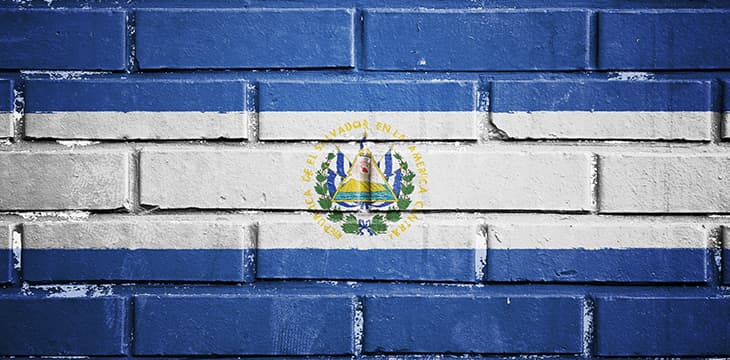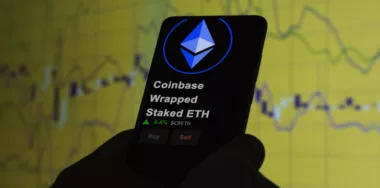Take me down to the Bitcoin City where the rugs are pulled and there is no pity …. Oh, won’t you please buy my Tether?
This week, Blockstream’s chief strategy officer Samson Mow appeared on Bloomberg TV to hype El Salvador’s wackadoodle project to develop a Bitcoin-themed city imaginatively titled—wait for it—“Bitcoin City.” The project was announced last weekend by President Nayib Bukele, the millennial icon of fascistic cool, as the BTC faithful gathered for the Latin America Bitcoin and Blockchain Conference.
Bitcoin City will allegedly be built in the municipality of La Unión, near the Gulf of Fonseca, and will be powered with geothermal energy generated by a local volcano. Bukele previously made BTC legal tender in his country and announced plans to harness volcanic energy to power his nascent BTC mining operations.
Currently, Bitcoin City is more style than substance, as more thought has apparently gone into imagining a central plaza shaped like the BTC logo than to more mundane items such as sewage flow. But Bukele revealed that the presumably well-heeled residents of this Crypto Acropolis will pay no tax on income, capital gains, payroll or property, leaving a 10% sales tax as the lone arrow in the municipality’s taxation quiver.
Anyone who was already casting a skeptical eye at Bukele’s urban planning aspirations—the man clearly never got over Zynga scrapping its CityVille game—felt their eyes roll when Bukele said the city’s development would ultimately cost around 300k BTC (roughly US$16.5 billion). But those eyes fairly popped when Bukele announced plans to finance Bitcoin City’s launch with a $1 billion BTC-denominated bond.
Even better, the bonds—which will be made available next year—will be handled by the tawdry tandem of Blockstream and iFinex. Blockstream are part of the developer cabal that robbed Bitcoin of nearly all its functionality, while iFinex is behind both the sketchy cryptocurrency exchange Bitfinex and the unbacked-by-verifiable-reserves Tether stablecoin. Bitfinex will act as the bond’s official ‘book-runner’ while Blockstream’s ‘I Can’t Believe It’s Not Bitcoin (But It Isn’t)’ Liquid Network will facilitate funds moving in and out of the bond.
Mow how much will you pay?
Which brings us back to Mow, who, in case anyone missed the point, appeared on Bloomberg Technology wearing a Tether t-shirt. Reporter Caroline Hyde got the ball rolling by asking why anyone would buy a BTC bond paying 6.5% interest when El Salvador’s current U.S. dollar-denominated bonds pay twice that rate.
Mow responded by claiming that there was “a war chest of Bitcoin backing this bond.” Half of the billion dollars raised by El Salvador’s bond issuance will be immediately used to buy BTC (handily ensuring a temporary pump in BTC’s value), while the other half will fund development of Bitcoin City’s infrastructure and mining operations.
The idea is the half-billion in BTC will be locked up for five years, after which it will be gradually sold off, theoretically pushing the bond’s coupon value much higher after that initial five-year period. This presumes that BTC will be worth a lot more than it is today, and Mow offered his “conservative” projections that the token will appreciate by a whopping 140% per year, every year, until eventually a single sat will buy you the Statue (Satue?) of Liberty.
That’s a highly dubious proposition given the BTC token’s utter lack of utility and the expected arrival of stiff competition in the form of central bank digital currencies in countries accounting for the vast majority of the global population. But hey, Mow money, Mow problems.
Pressed by Hyde as to why institutional investors wouldn’t simply buy BTC directly, Mow noted that most regulatory bodies don’t allow them to carry such assets on their books. Mow then admitted that the BTC bond was designed to get around these regulators’ objections by, er, pretending that it’s not a BTC-backed bond.
Doin’ it for the kids
Mow also downplayed institutional investors’ need to think too hard before investing in this bond, claiming that any institution that bought in would be “helping El Salvador,” which is apparently “much more important” than these investment managers’ fiduciary duty to do right by their clients. In Mow’s defense, his microphone may have malfunctioned before he could finish saying “helping El Salvador’s president loot the country.”
But Mow saved his best material for last, rejecting Hyde’s premise that the BTC bond’s launch might increase friction between El Salvador and global agencies such as the International Money Federation or World Bank. Mow added his doubts that these agencies “are really relevant in a world based on Bitcoin.”
With a straight face—and wearing a Tether t-shirt—Mow said the only power these agencies had was their ability to “make money out of thin air.” Considering the Tether money printer routinely creates billions of new tokens without any evidence of backing by anything more substantial than CTO Paolo Aordini’s upper lip sweat, self-awareness clearly isn’t Mow’s strong suit.
The documented history of wash trading by Tether and Bitfinex to artificially inflate BTC’s value suggests all sorts of possible scamming opportunities here, including wash-trading to pump the bond price to a point where outside money—actual money, not USDT—is tempted to dive into the pool. USDT is also one of only three means by which investors can buy the bond, allowing for even more opportunities for Bitfinex to exchange funny money for the real thing.
There’s also the likelihood that some of El Salvador’s neighbors might cast a jealous eye on their seemingly thriving rival and decide to get into this Bitcoin business for themselves. This would mean the principals get to sell more of everything; bonds, dodgy stablecoins, BTC mining gear and—above all—pipe dreams.
The ruins of Pumpeii
Regardless of how much fleecing of the foolish gets perpetrated here, the Bitcoin City concept seems to have already planted the seeds of its own demise. This crypto utopia will presumably be populated almost exclusively by BTC maxis, most of whom embody all the wrong aspects of libertarian culture.
As such, when this cohort of seriously opinionated individuals starts packing for their move to Bitcoin City, it’s difficult to imagine them bringing anything resembling a willingness to compromise on, well, anything. Particularly when it comes to the city’s official slogan, which will probably end up being some variation of “you’re not the boss of me!”
If past is truly prologue, Bitcoin City’s fate will mirror that of the BTC protocol. An inability for residents to agree on what time the streetlights should come on at night will result in this functionality being completely switched off. In response, some residents will launch fleets of spotlight-bearing drones, which other residents will attempt to shoot down with AR-15s, but the police won’t intervene because they haven’t been given any powers.
The “Taproot” update will be imposed by some of Bitcoin City’s more secretive residents, resulting in the removal of all street signs and house numbers. This will cause endless frustration among the city’s pizza delivery drivers, who will quit en masse after being instructed one too many times to deliver to “duh, the coolest house on the block, you idiot, how many times do I have to tell you.” (To which one driver will famously respond: have fun staying hungry.)
Bitcoin City’s ultimate collapse won’t come from its residents, although it will come at them in a major hurry. It’s probably no surprise that a group of individuals who don’t believe BTC’s value can ever decrease also can’t foresee a day when a dormant volcano suddenly belches smoke into the sky and vomits an avalanche of molten lava down its slopes.
Imagine the consternation on the faces of the archaeologists who, centuries from now, unearth the bodies of the BTC maxis who got caught in this storm. “Why didn’t they run?” asks one archaeologist. “Probably too weighed down by those stupid diamond hands,” answers another. “Or too blinded by those lame laser eyes,” posits another.
No, says the head archaeologist, who cites historical records showing all of the residents had dismissed warnings of an imminent eruption as “Volcanology FUD.” The local residents—the original local residents—weren’t surprised by this dismissal. After all, the crypto gringos had ignored their earlier protests against the Bitcoin Law; why would this time have been any different?
At least this time it was the digital interlopers who ended up paying the price.
Follow CoinGeek’s Crypto Crime Cartel series, which delves into the stream of groups—a from BitMEX to Binance, Bitcoin.com, Blockstream, ShapeShift, Coinbase, Ripple, Ethereum, FTX and Tether—who have co-opted the digital asset revolution and turned the industry into a minefield for naïve (and even experienced) players in the market.
New to blockchain? Check out CoinGeek’s Blockchain for Beginners section, the ultimate resource guide to learn more about blockchain technology.









